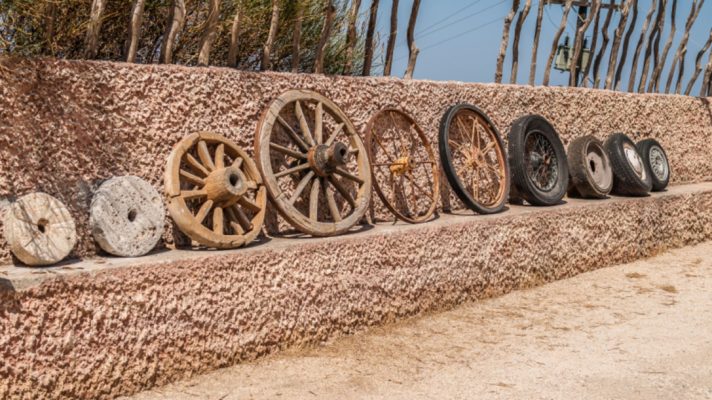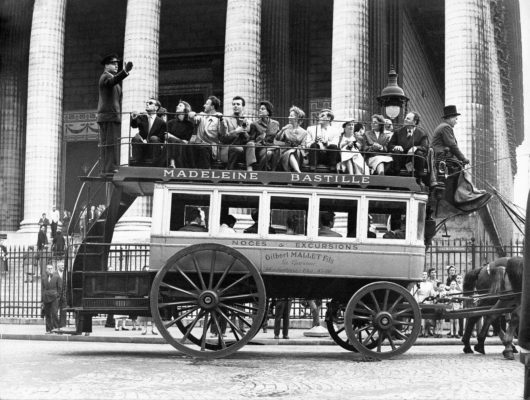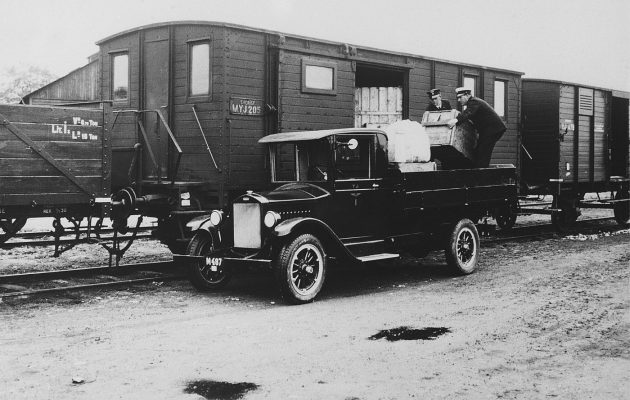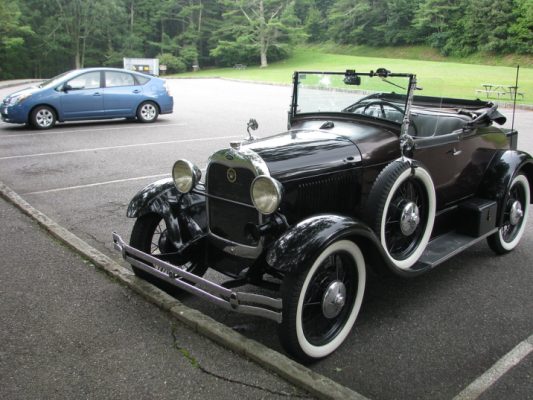History of Land Transportation
The history of land transportation is the history of humanity. Each and every one of the societies has had the need to move objects and merchandise. This is how the need to load objects and distribute them between different territories is at the origin of land transport but also maritime and air transport.
Already in the pre-Columbian era (a period that covers from the birth of the first American settlers to the conquest by the Europeans with the colonization of Columbus in 1492), the Incas had a system of interconnected roads throughout their empire to move different types of merchandise. In the beginning, land transport was carried out on foot, using the force of animals or through canoes or boats, taking advantage of the current of the rivers to get their merchandise to the desired destination.
Hunger was the cause that compelled man to move to secure his food and thus began the form of transportation as we know it today. Since the human being is weak as a transport force, he needed to tame animals at first. The dog was the first, later he used bigger and stronger animals to transport heavier goods.
In this article, we will discuss the definition and overall history of land transportation, its advantages, and disadvantages.
What is land transportation?
Land transportation is the set of means of transport that operate through land vehicles, that is, vehicles that move on the solid surface of the earth. Most of them involve wheeled vehicles, either moving on rails or freely on the surface.
Vehicles for land transport can be very diverse in their locomotion system, their transport capacity, or the nature of their cargo. Broadly speaking, we could classify them into:
-
Motor vehicles –
vehicles that have an engine, generally internal combustion, based on fossil fuels (gasoline, natural gas, etc.). They can be cargo (trucks, vans, etc.) or passenger (cars, buses, motorcycles, etc.).
-
Rail vehicles –
Motorized or electric, unable to move outside the path traced by the tracks. They are generally of the massive type, and can carry cargo and passengers at the same time, such as trains, trams, or subways.
-
Blood traction vehicles –
That is, powered by animals or by human effort, such as bicycles, carts, etc.
The first milestone in history of land transport: the wheel
This need to transport things with greater volume and the fact that their weight could not be supported by a single animal, led to the creation and subsequent promotion of the wheel. It appeared in prehistory and has been one of the most wonderful inventions in all of history. And we still use it today. Today it has evolved so much that its inventors would be unable to recognize their own invention.
The wheel allowed the evolution in thehistory of transportation and the arrival of man to distant places in less and less time. Horse-drawn carts and stagecoaches fostered the exchange of all kinds of materials thanks to the establishment of trade routes.
Later, other methods of land transport emerged, such as the bicycle, which was the origin of the motorcycle and this, in turn, of the automobile. Man has always sought a way to invent a device that would transport him quickly and comfortably without the need to use animals. In 1882, oil was discovered and little by little more inventions emerged that used this fuel as a driving force. Among them, is the car.
With the First World War, the need for transport increased, and thus the buses and the great motor industry that exists today, which includes such varied methods of transport as the railway, urban transport, metro, or high-speed train, arose. Its evolution has been essential to guarantee the supply of food and all kinds of goods and services. It has been fundamental for the advancement of Humanity itself.
Evolution and history of land transportation
The history of land transport has uncertain origins, but it stems from the need to move people or goods more massively, over greater distances and/or at higher speeds than can be done on foot.
In that sense, the first versions of this transport had to do with animals: camels, horses, donkeys, cows, llamas… any animal robust enough to carry a human being on its back or to pull a cart was ideal. Obviously, for this, the invention of the wheel was a key antecedent.
The great empires and civilizations of antiquity always provided good means of communication, such as extensive road networks. For example, they were necessary for the internal control of the Roman Empire.
Even today in the history of land transportation, these connections are necessary for the development of contemporary nations, since with passable roads and railways it is possible to circulate merchandise, tools, materials, and people to where they are needed, the survival of trade is key.
This panorama changed drastically with the Industrial Revolution of the 18th and 19th centuries, especially due to the invention of the steam engine. The railway was imposed as a symbol of progress, since it allowed rapid and massive transportation over enormous distances. Thus, the railways unified large countries such as the United States, Argentina, Mexico, and Russia.
At the end of the 19th century, new mechanisms for transport emerged thanks to the discovery of oil and its refined derivatives such as gasoline. Thus, for example, the internal combustion engine was invented. Consequently, a whole new generation of vehicles was born throughout the 20th century, for personal, massive, and even military use.
Already in the 21st century, new technologies and the Digital Revolution at the end of the century allowed the emergence of more refined forms of land transport, such as subways and high-speed trains.

Characteristics of land transport
History of land transportation is, as the name implies, the default for moving over land. In that sense, it always depends on the geographical and meteorological conditions of where you are, at a certain point on the continental surface.
It often requires paved and conditioned roads, known as highways, as well as tunnels and bridges that allow crossing valleys, depressions, mountains, etc. In its entirety, this infrastructure makes up the roads of a country or a region.
Land transport is one of the preferred methods of transporting goods and passengers throughout the world, which, incorporated into cities, allows the existence of urban transport: buses, automobiles, motorcycles and in some cases trams, trains or subways, which transport citizens from one point of the city to another on a daily basis.
Types of land transportation
Broadly speaking, there are two types of land transportation:
-
Road transport –
The one that uses wheeled vehicles capable of roaming freely on the earth’s surface, although preferably on paved roads or highways, such as buses, cars or even bicycles, carts, and motorcycles.
-
Rail transport –
In other words, those vehicles unable to travel except along predetermined paths, such as train, tram, or subway tracks, often stopping at stations or fixed stops along the way.
Advantages of land transportation
Land transportation is perhaps the most advantageous for short distances, generally combining economy, practicality, and speed. This versatility also allows it to meet collective or individual passenger transport needs, for example, a bus or a car.
On the other hand, it can be used to transport cargo of all kinds in the history of land transportation (in trucks, railways, or rolling containers, for example), including heavy machinery, raw materials, or delicate or dangerous products.
Disadvantages of Land transportation
Since its movement occurs on the surface of the continents, land transport is always faced with geographical and topographic accidents, such as crossing rivers, precipices, or crossing mountains. For this reason, it implies, on the one hand, the need for investment in infrastructure, and on the other, a series of unavoidable dangers.
On the other hand, the driving of most of these means of land transport falls on a single driver, whose responsibility and expertise depend on the well-being of the cargo or passengers, unlike other forms of transport in which there is a complete team managing the vehicle.
3 transportation projects that promised a revolution (and failed)
With every James Bond movie, Jules Verne novel, or world tech fair comes a new and exciting way to travel.
The formula usually presents a package of our immediate future wrapped in science fiction promises: thrusters attached to a backpack that allow us to fly, treadmills that walk for us.
Today in the history of land transportation these things exist, but why haven’t they become massive and generated any revolutionary change, as foreshadowed?

Poor forecasters
“I think we all have a cultural affinity for technology, but at the same time we’re really bad at forecasting,” says Jim Moore, director of the Transportation Engineering Program at the University of Southern California.
The point, he says, is that any technology that is based on new infrastructure standards is risky. It requires huge changes and large investments, and its market penetration is slow.
These are three inventions that did not cause the seismic effect that they promised, despite the initial enthusiasm. But you can still find them out there, if you know where to look.
-
The monorail
The Vision:
It’s hard to find a relic of a discarded form of transport in the history of land transportation that better encapsulates the vision of the future than the monorail did in the past.
Engineers had been toying with the idea of an elevated train track since the 1800s, until the first one opened in 1956 in Houston, Texas, in all its fiberglass splendor.
His curvy, otherworldly carriages began to appear in different places – even in Japan – but the growth in popularity of the automobile clipped the wings of the form of transportation in the skies.
What’s left:
Monorails are mostly used to shuttle passengers between airport terminals and amusement parks, like at Disney World, where Mickey lovers are shuttled from the parking lot to the entertainment areas.
It is actually a shame that they have not reached the popularity that was expected of them in the 50s. They are ecological, silent and very safe.
You can still see them in some cities as an alternative to public transportation.
Such is the case of the Seattle Center Monorail, the first commercial streetcar, which connects the neighborhoods around the Space Needle with the center of this capital.
It was inaugurated at the 1962 World’s Fair, and currently carries 2 million passengers a day.
-
Moving belts
The Vision: More than a century ago in the history of land transportation, treadmills were another gushing invention, supposed to change the way we walk forever.
The first scrolling belt appeared in 1893 at the World’s Columbian Exposition in Chicago, and was again in the spotlight at the Paris fair seven years later.
What’s left: These days, like the monorail, this invention is relegated to airports for use by hurried travelers always on the brink of missing their flight.
Last November, Boston’s Logan International Airport announced the reconstruction project of the 804-meter-long beltway, which connects Terminal E with the Blue Line subway station.
Why have the monorail and moving belts ended up confined to airports?
Moore says that unlike the big cities they were created for, these expensive innovations require high maintenance and low-risk environments to operate, so airports have become an ideal environment.

-
Pneumatic trains
The vision: It sounds like an episode of Futurama, but about 150 years ago in the history of land transportation, some thought it was a good idea to have pneumatic trains.
The idea was that the cars were cylindrical and transported from one place to another by the pressure of the air at each end of the tunnel, like those tubes that banks used to send notes from one floor to another.
In 1864 a train with these characteristics was built under the Crystal Palace Park in London. A few years later, an American millionaire tried to implement it in New York.
Neither man made it past “novelty” status and lived short lives.
What’s left: the closest thing we have to these tubular transports is the Hyperloop, the pet project of the founder of Tesla Motors, Elon Musk.
The Hyperloop consists of a pressurized capsule manned by passengers, which is shot through a 1.82-meter diameter tube at a speed of 1,200 kilometers per hour, traveling from San Francisco to Los Angeles in 30 minutes.
It is still in the design and testing stage.
How the world’s first mass transit system was born
Considered one of the great thinkers of humanity, the Frenchman Blaise Pascal (1623-1662) was far from acting solely in the field of ideas.
Known for his mathematical theorems and philosophical treatises in force until today, few people know that in the 17th century this mathematician and inventor of the first calculator in history created something that would forever change the history of land transportation and the lives of people in cities: public transport.
Thanks to the restless spirit of Pascal, world urban transport has up to one year of birth, 1662.
At that time, Paris was already a large city with half a million inhabitants, but most people did not have their own means of moving from one place to another and could only go on foot.
To make life easier for citizens, Pascal developed an urban transport system of carriages with fixed itineraries, fares, and regular schedules.
The philosopher suggested to the Duke of Roaunez that he ask King Louis XIV for permission to operate the service, which was heard and approved.
The three routes
The passage in this pioneering system cost five “sols”, the currency that circulated in France at the time of Louis XIV in the history of land transportation.
There were three initial transport lines: the first served between the Porte Saint-Antoine and Luxembourg and began operating on March 18, 1662.
On April 11, the second line was inaugurated, running from Rue de Saint-Antoine to Rue Saint Honoré. And the third and last route was opened in May of that year and connected the Montmartre neighborhood with Luxembourg.
It was a success among the Parisian population, according to the testimony of Pascal’s own sister, Gilberte Pérrier, who witnessed the start of operations.
“The inauguration began on Saturday at 7 in the morning, with a wonderful brightness and pomp. The seven carriages that occupied this first route were launched,” Gilberte recorded.
But with the maiden voyage began the well-known problems of urban mobility in the history of land transportation that continue to affect the world to this day.
“The thing was so successful that from the first morning there were a number of full carriages, but after lunch, there was such a huge crowd that you couldn’t get close to them, and the other days were the same,” she explained.
“The biggest drawback was that the crowd in the streets was waiting for a carriage, but when it arrived it was full,” she added in her account.
So, the system was not enough for even half of the people there were, according to Gilberte Pérrier.
Pascal, died the same year the transportation system was started after a long illness.
The system operated for a few years, but due to problems with the administration, it was closed and a similar one would only re-emerge in Europe much later.

Innovator of his time
Pascal’s invention positively surprises even scholars in Human Sciences.
“We imagine that great philosophers are always in the world of ideas and far from people’s daily lives, which is not true,” explains philosopher Luis César Oliva, professor at the Department of Philosophy at the University of São Paulo (USP ) and scholar on the life of Pascal.
“Pascal was a great thinker who could see, even then, that for the progress of a city it is necessary to solve the problem of urban mobility”, says the researcher in the history of land transportation Eurico Galhardi.
According to Galhardi, after the closure of Pascal’s project, public transport on wheels would be reborn far from France, more precisely in Brazil.
“We created the second collective transport project in the world,” says Galhardi, who is president of the board of directors of the National Association of Urban Transport Companies (NTU).
The “kissing hands”
The arrival of the Royal Family in Brazil, in 1808, instituted the “kissing hands” ceremony in which people went to court to please the King of Portugal.
The problem was the distances to travel to reach the ceremony in the palace, where they would also ask for some favors, pardons, or even royal benefits.
Conclusions of the history of land transportation
Looking at the history of land transportation we see that, in its different forms, it has been giving answers to the questions of its time. One of the great challenges of today in the world of logistics is to respond to urban logistics in large cities. The need for deliveries is growing, but cities have problems facilitating access to transport: time restrictions, pollution limits, the impossibility of giving more space to streets and highways, and so on. Already in the times of Emperor Augustus, carts and horses were subject to restrictions regarding their use in the cities. Logistics has been the art of balancing needs with the reality in which we move for centuries.
Another clue that history gives us is that the search for new, more efficient transport systems is not going to stop. Not only the fight to find better, cleaner engines that do more kilometers with less expense, etc. But new players that did not exist until now, such as parcel delivery using drones.
But the new mills will cause new needs for improvement. Drones require new regulations to legislate them, and respect for the environment requires new fuels and engines. In the same way that the invention of the wheel led to the improvement of roads to support cart traffic or the improvement of rail systems in the face of the expansion of the railway.
Lastly, it is worth emphasizing one of the great constants of transport since its inception in the history of land transportation, and that is how inseparable it has been from human activity. Transportation brings goods and people closer, facilitates trade, the creation of wealth, the exchange of products that are frequent in a place to exchange them for those that are scarce. Man’s need to trade and to know more about his neighbor means that land transport -and transport in general- will continue to evolve alongside him for a long time.



